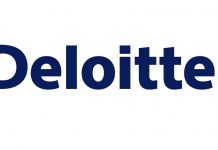Chain-Finance attended Professor Michael Mainelli’s seminar on Smart Settlement and Blockchain. Professor Mainelli talked about the copious research his group have been conducting on Mutual Distributed Ledgers (MDL).
The Professor will be publishing a new report shortly on blockchains in the context of insurance, possibly a follow up on the original insurance report published by him in 2014 - a seminal review of the use of MDL in the context of personal insurance. We were lucky to have Professor Mainelli at our last Chain-Finance event giving a clear breakdown of the insurance industry, where MDL can be used and also a showcase of SafeShare which is based on Z/Yen’s MDL technology.
The morning event was all about settlement in securities. Professor Mainelli talked of a cost structure of $17 billion on post trade processing of securities.
However, to think that MDL will come in to obliterate delayed settlement in securities was a myth. He stated that “delayed settlement (T+2) is a design choice reflecting deeply embedded practices e.g. access to leverage and liquidity”.
To reinforce the point, MDL opportunities should not be seen outside of a market context. For example, changing how assets are transferred or contracts executed are far along the horizontal axis of Process Change Difficulty (see diagram below). In other words, blockchain technology has a role to play to make things more efficient but the market may not be ready for or they may not want to change. Noteworthy are the seemingly low hanging fruit for MDL in timestamping, see free service MetroGnomo project.
What about securities clearing and blockchain tech? How might a MDL affect the role of a Central Third Parties? Professor Mainelli considers that MDL reduces their role, as the technology does the safeguarding and preservation of the history of transactions.
Next, we heard from Richard Olsen from Lykke exchange talk about the new service he has launched in the blockchain space. They went live on Sunday and the app is available from the Appstore.
Lykke is a digital asset exchange with some twists. They allow third parties to issue coloured coin assets on the Lykke exchange. These digital assets can be backed by currency based assets or shares or for example loyalty points. This is part of a growing trend to create ‘synthetic assets’ with little or no friction on exchange of those assets (see String).
The transfer of assets on the exchange does not involve any clearing or delayed settlement. All assets on the exchange are held in multi-signature wallets. When someone submits an offer to sell an asset and it is accepted then the seller signs the transaction and it is co-signed by Lykke and the transfer takes place.
You can also withdraw your assets completely from the exchange and trade them as bearer instruments.
Lykke is seeking regulatory coverage for their service in the UK and Liechtenstein at the moment.
Here’s a diagram that shows the architecture of the exchange.
You can see that the Open Assets Protocol (developed by Flavien Charlon from Coinprism) is used for the creation of the Colour Coin assets (orange box). This is the same protocol used by Colu/Deloitte and T0.
The reaction from the audience was that the traditional financial services incumbents would resist these changes. Some voiced that liquidity would be an issue. Mr Olsen didn’t seem deterred. Olsen is a veteran in financial services and was one of the founders of Oanda.On the whole, he is determined that the principles of the exchange are sound and that his team were prepared for the headwinds ahead.






